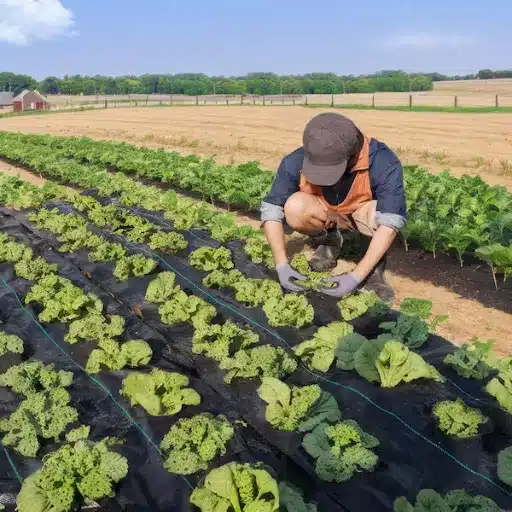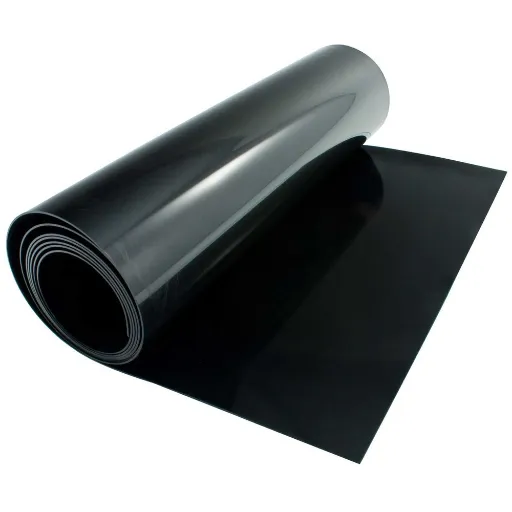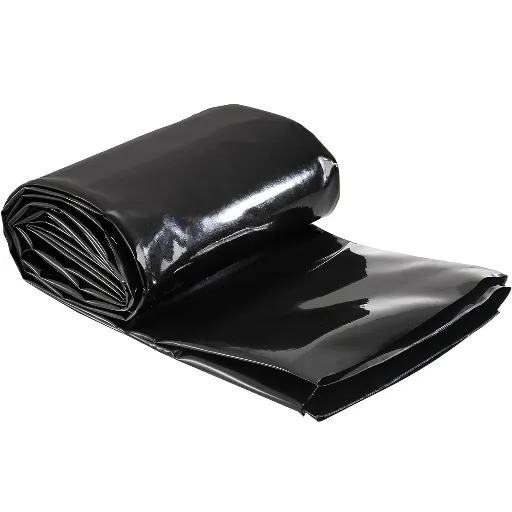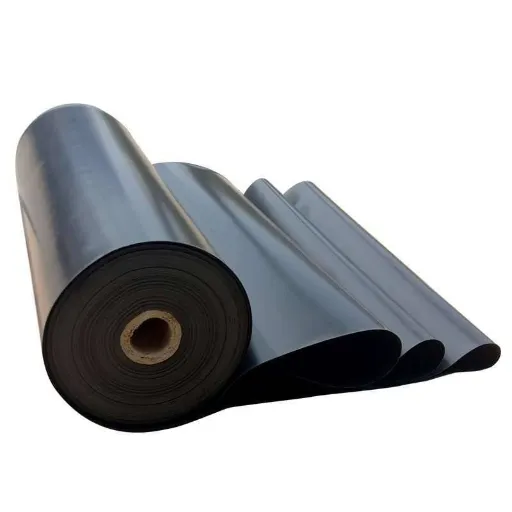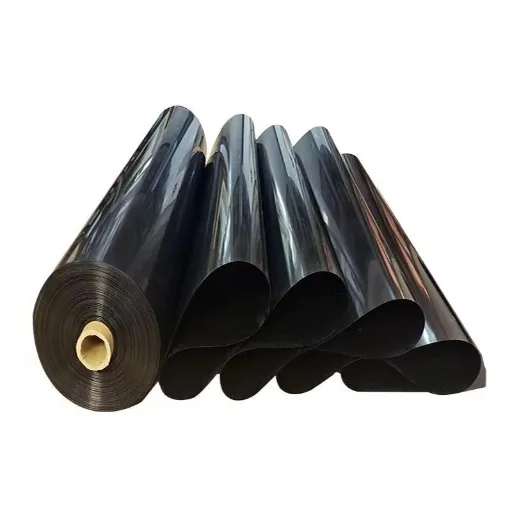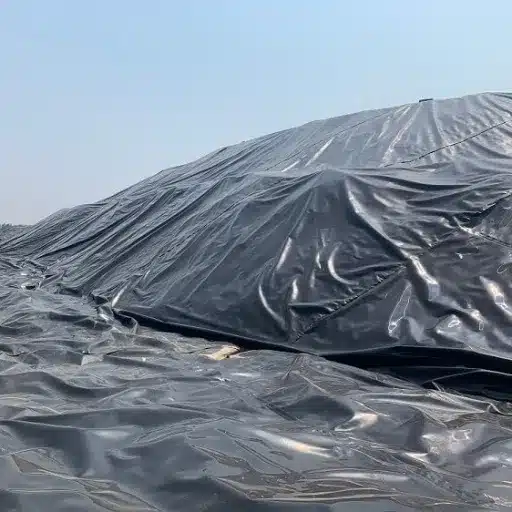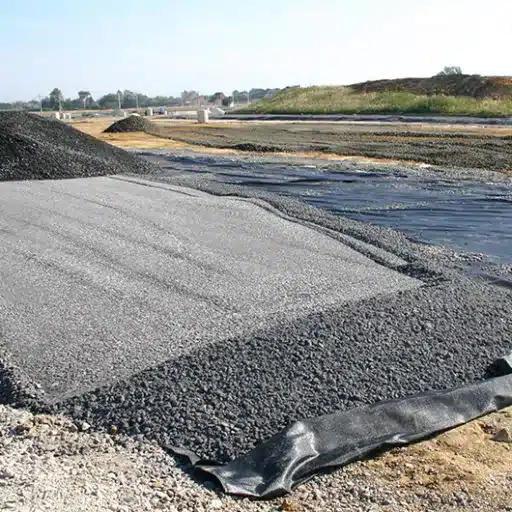Weeds are broken loose from great gardeners too readily into chaotic tangle, depriving the precious plants of your care of nutrients, sunlight, and space. A weed barrier landscape fabric is a proverbial game changer for any gardener who seeks to provide an effective and lasting solution. This fabric can serve as a barrier to unwanted plant growth, help enrich the soil, and lessen the use of chemicals for weed control. In this piece, we explore some of the best weed barrier landscape fabrics available in the market so you can choose the one best suited to your garden. This guide will impart you with the information and tips needed to keep your gardens strictly neat and free of weeds, whether you keep a compact vegetable garden or manage a large ornamental garden.
Understanding Weed Barriers: Types and Materials
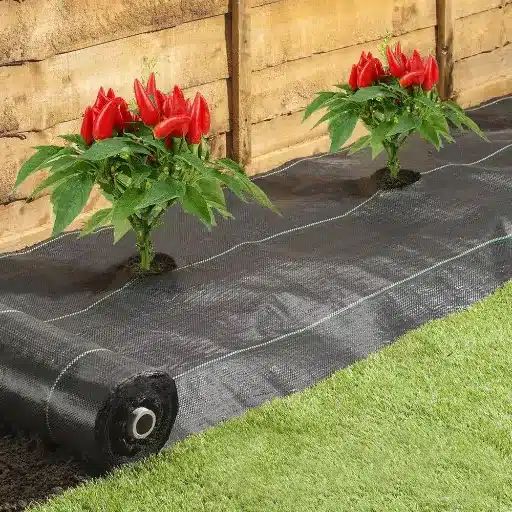
What Are Weed Barriers?
In essence, barrier materials may be placed on areas of the soil in gardens, flower beds, or landscaping assignments to block the development of weeds. The layer in fact stops sunlight from reaching the seeds of weeds and prevents their germination while still being loose enough to allow air and water to nourish nearby plants. Weed barriers greatly reduce time spent on manual weeding, allowing gardeners to keep the areas immaculate and orderly.
Weed barriers are presented in a vast array of forms, with some of the most common being plastic sheeting, woven or non-woven landscape fabric, and organic mulch. Landscape fabrics made of polypropylene or polyester are preferred because of their durability and water permeability. An example would be top-grade woven fabrics featuring UV stabilization and having an extended life of 5–10 years under continuous exposure to sunlight. Non-woven varieties, on the other hand, could be perfect for areas where a little greater weed control is needed but might provide slightly less drainage as compared to their woven counterparts.
📊 Research Insights
Other research data recently reveal that weed barriers play a significant role in productivity in small-scale agricultural operations. Agricultural organizations reveal that weed barriers can:
- Reduce labor costs related to weed control by up to 90% in vegetable gardens
- Cut water evaporation by 50%, conserving valuable water resources in drought-prone areas
- Allow plants to grow freely while competing with weeds for nutrients and water
Different Types of Weed Barrier Fabric
The types of weed barrier fabrics come with their own benefits and disadvantages that depend on the gardening requirements. They are:
1. Woven Weed Barrier Fabric
These barriers are made of tightly woven polypropylene material. They are quite durable, allowing the passage of air and water while blocking out sunlight. This fabric is mainly long-term and is suitable for use where there is heavy-duty equipment or heavy foot traffic in the garden. Woven fabrics will generally last anywhere from 5 to 10 years, depending on the condition and quality, so they are quite popular within commercial agricultural circles.
2. Non-Woven Weed Barrier Fabric
Non-woven are made of spun-bonded or needle-punched polyester or polypropylene. Unlike their woven counterparts, they block sunlight well but are less permeable of air and water. These barriers are best under areas where utmost weed suppression is required, such as located below gravel or pathways. However, an alternative irrigation method may be required as to prevent water pooling.
3. Plastic Weed Barriers
Plastic sheeting constitutes another common form of weed control. Usually made from heavy gauge polyethylene, these weed barriers grade perfectly in stopping weeds by blocking sunlight entirely. Hence, the end-use scenario would be best suited for longer-term weed problems or periods of remediation of under-decks or large landscaping projects. However, plastic barriers do not allow for water or air to pass through and over time, could negatively affect soil health.
4. Biodegradable Weed Barriers
The biodegradable barriers entail those running on paper, untreated burlap, or bio-based mulches. They can be an environmentally friendly method of garden weed management since they may break down slowly and feed into the soil. In a study released by the American Association of Professional Agronomy, it was found that biodegradable barriers reduce weed competition while improving the organic content of the soil over time. They would be suitable for use in annual flowerbeds and vegetable gardens.
Top Recommendations for Best Weed Barriers in 2025
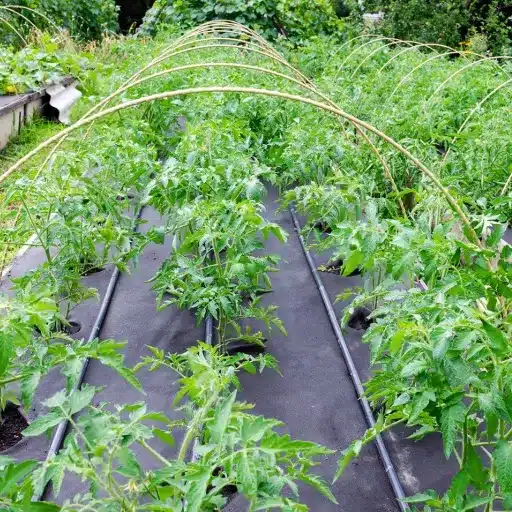
💡 Expert Recommendation: The reinforced landscape fabrics would be strongly recommended for the best weed barriers in 2025. Truly, their combination of durability, water permeability, and efficiency makes these fabrics ideal even when applied within the scope of professional landscaping or in home-garden projects.
Best Weed Barrier Fabric for Home Gardens
Best weed barrier fabric for home gardens would be selected for durability, water permeability, and environmental safety. Among them top-rated for 2025 would be:
🏆 Scotts Landscape Fabric
Known to offer excellent weed control with a life span of 25 years, thus delivering long-term protection for the garden. It also offers excellent water penetration, so moisture and nutrients with good permeability can pass through to promote plant growth.
🥈 HOOPLE Premium Garden Weed Barrier
Combining lightweight yet nearly tear-resistant properties. It has UV stabilization with a thickness of 5 ounces per square yard, making it an excellent choice for homes and gardens to withstand unknown weather conditions, easy to install, and very effective at stopping weed growth while allowing water and air to pass freely.
🥉 Dewitt Sunbelt Woven Ground Cover
The alternate choice for environmentally conscious gardeners. The design makes it UV-resistant with a permeability rate of five gallons per square foot per minute to make sure that function and sustainability are bestowed on it. Because of its ability to keep the soil nutrient-rich and workable through the planting season, the fabric is especially favored by vegetable gardeners.
Best Landscape Fabric for Vegetable Gardens
Finding the most suitable landscape fabric for vegetable gardens is crucial for weed control in the long run, maintaining soil health, and enhancing plant productivity. Below are some of the top recommendations based on their performance, durability, and eco-friendliness:
| Product | Key Features | Best For |
|---|---|---|
| Dewitt Pro-5 Weed Barrier Fabric | 5 oz/sq yard, UV resistant, highly permeable, 5-10 year lifespan | Heavy-duty vegetable gardens, harsh weather conditions |
| ECOgardener Premium Landscape Fabric | Eco-friendly, lightweight yet durable, water permeable | Small to medium garden beds, environmentally conscious gardeners |
| Agfabric Weed Barrier Ground Cover | UV resistant, printed grid lines, high permeability | Organized crop planting, budget-conscious gardeners |
| Scotts Pro Landscaping Fabric | Balanced resistance and permeability, efficient drainage | High rainfall areas, versatile garden applications |
How to Choose Your Weed Barrier for Landscaping
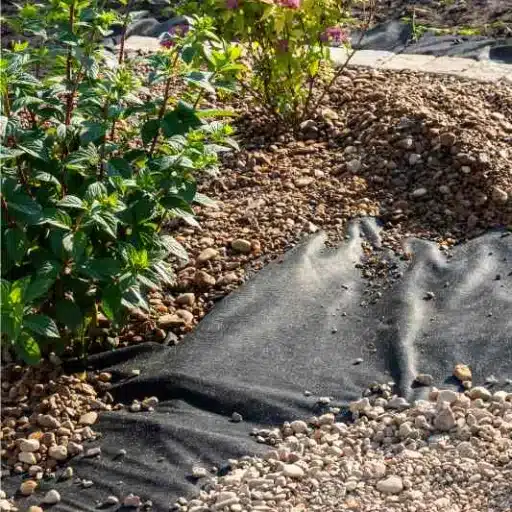
Factors to Consider When Selecting a Weed Barrier
Choosing the right weed barrier is essential to cultivating a healthy landscape with little maintenance. Consider these:
- Type of Material
Typically, weed barriers are made of woven fabric, or non-woven fabric, or plastic sheeting. Woven fabrics are durable and allow both water and nutrients to pass through, so they’re great for vegetable gardens and flower beds. Non-woven fabrics offer the greatest weed suppression but are less water permeable. Plastic sheeting offers absolute weed prevention but might cause problems with water pooling depending on the plants. - Durability and Longevity
Strength and duration depend on the thickness and quality of the barrier. For low traffic, paths under gravel, a light-weight barrier lasting for 5 to 10 is suited; for heavy traffic, at least 10 years would be preferable. For example, DeWitt Pro 5 Barrier claims 15 years under best installation practices and would therefore prove economical for long-term project applications. - Water and Air Permeability
An effective weed barrier is one that suppresses weeds but favors soil health. Check for weed barriers with good permeability ratings, usually in GSM (grams per square meter). Fabric with high GSM offers durability and strength, while still permitting air and water to reach roots. For the average garden application, a fabric weighting between 100 and 130 GSM should suffice. - Environment-Twin Barrier
Prioritize the environment, then the biodegradable type of barrier is preferable. A biodegradable barrier will basically be made of natural fibers, such as jute or coconut coir. These materials, as time goes, will decompose and enrich the soil without introducing plastic wastes into the environment.
Expert Tips for the Most Effective Use of Weed Barrier Fabric
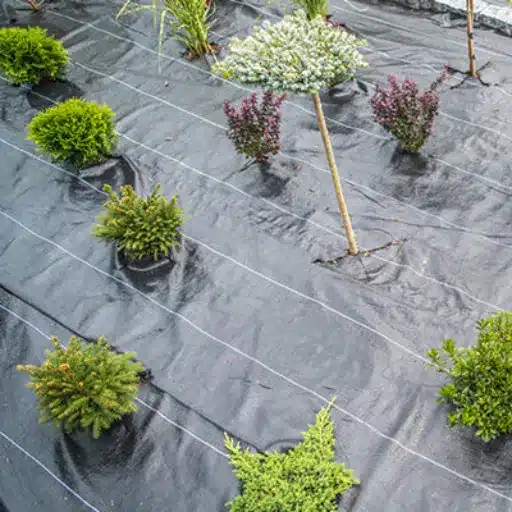
🎯 Installation Procedure Is Everything
The installation procedure carries a very big weight in the performance of weed barrier fabric. Check whether the area has fewer weeds and debris before laying the fabric. A flat surface allows fabric to work efficiently without any gaps for weeds to emerge. Lock in your fabric with landscape staples, each placed approximately 12 to 18 inches apart.
💧 Provide for Drainage
Most weed barrier fabrics are made to allow water and air to permeate, keeping soil and plants healthy through their growth stages. Buy a good quality fabric: one with not less than 5 gallons per square foot permeability rate. This will prevent pooling of water that would damage the roots of your plants, or encourage mold formation. Frequently check on the fabrics to avoid anything blocking the flow of water.
🌿 Combine Mulch for Best Effect
The fabric must be topped with 2-3 inches of mulch, both to suppress additional weed growth and to strengthen the fabric’s durability. Organic matter from mulch – wood chips or bark – gradually decomposes, adding nutrients to the soil and beautifying the landscape.
🔧 Replace or Repair Areas of Fabric That Are Damaged
Overturning is a definite occurrence with bags of weed barrier fabric. Take time every season to carefully examine your landscape for any tears or frayed edges that need mending, especially in those areas receiving a lot of foot traffic. Use old fabric scraps or buy small rolls of fabric to patch it up, maintaining the blanket of protection against weeds.
Maintenance Advice for Long-Lasting Weed Control
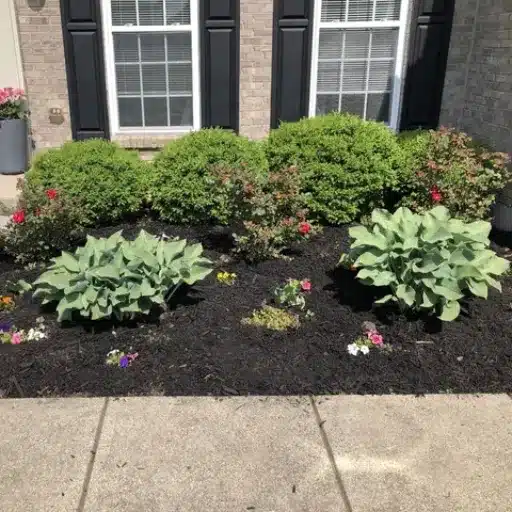
I usually inspect the weed barrier fabrics whenever I want to maintain solid weed control to check for any signs of damage, like tears or fraying. When I spot a problem, before it worsens, I patch it up with a leftover piece of fabric or purchase small rolls. In this way, I ensure the barrier will continue to prevent weed growth.
Taking Good Care of Your Weed Barrier Fabric
How you take care of your weed barrier fabric will greatly determine its longevity and efficacy in preventing weed growth. Here are a few care instructions based on up-to-date information:
- Cleaning and Inspection Regularly: Sometimes fallen leaves, soil, and weeds accumulate as debris on the surface of the fabric. Clean them frequently so that organic matter does not decompose and create fertile grounds for the growth of new weeds. Periodically inspect the fabric for any tears or damage and repair these without delay to maintain the area under coverage.
- Single Yearly Reapplication of Mulch: If you intend to use mulch on top of the barrier fabric, then you should keep the mulch topped up for at least another year. A fresh layer of organic mulch would further help with moisture retention, soil temperature stabilization, and keeping the fabric from getting sun exposure, hence extending the life of the barrier fabric.
- Limit Root Overgrowth: Tree and shrub roots can grow beneath the fabric causing a lot of shifting and damage to the fabric. Keep clear borders around large plants and cut the aggressive roots to prevent this problem. It is reported that uncontrolled root systems may undermine the barrier effectiveness up to 25%.
- Allow Drainage: Confirm that water could flow freely through the fabric preventing any pooling or erosion degrading the material. Usually, quality weed barrier fabrics allow almost 5 gallons of water per square foot to filter through in a minute. Continue to check that your fabric still drains well as part of your maintenance activities.
Other Strategies to Complement Weed Control by Fabric
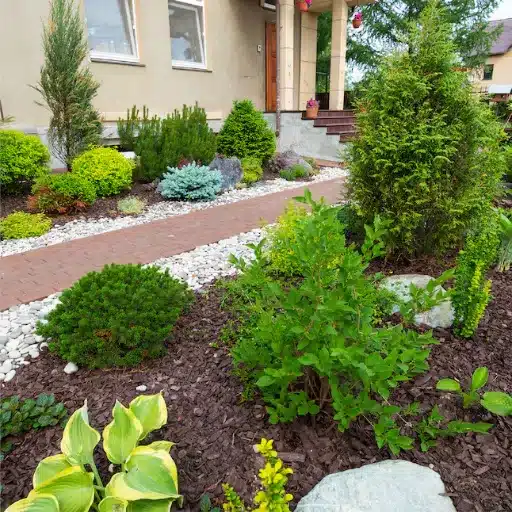
While landscaping fabric is strongly effective in preventing weeds, combining it with other measures could create an even sturdier barrier against invasive plants. Below are some other methods to bolster your weed control efforts:
🍃 Organic Mulch
To better weed control from the installation of landscaping fabric, you may apply a layer of organic mulch such as wood chips, straw, or shredded leaves on the top. It also keeps blocking sunlight that may help in the germination of weeds. Latest studies reveal 2-3 inches of mulch can reduce weed growth up to 85%, while it maintains soil moisture and temperature.
🏗️ Proper Edging
Proper edging for garden beds and paths can also keep weed seeds out from creeping in from adjacent areas. Steel or plastic edges will act as physical barriers, and this simple addition can keep weed penetration down about 30 percent, according to landscaping professionals.
✋ Manual and Mechanical Weed Removal
Where weeds persist and manage to sneak through tiny cracks or gaps, manual and mechanical removals are otherwise indispensable. Weed hooligans or weed pullers may work very well. You should target these weeds mostly toward early growth status to prevent them from having the chance to seed or spread to a greater extent.
🧪 Pre-emergent Herbicides
Also, pre-emergent herbicides are great when you use them with your fabric to prevent weed seeds from germinating. According to studies, products that contain trifluralin or prodiamine as main ingredients have very strong effects on reducing weed emergence if applied at the right time, generally in early spring.
Reference Sources
-
Heirloom Soul: This source discusses the effectiveness of different types of landscape fabrics, including woven and non-woven options, and provides practical advice on their use in various applications like flower farms and home gardens. Source
-
Sandbaggy: Offers a detailed guide on selecting the best weed barrier fabric, considering factors like material type, UV resistance, and thickness. It also provides recommendations for specific use cases such as under gravel or in vegetable gardens. Source
-
Garden Mats: Highlights the benefits of high-quality woven polypropylene fabric for landscaping, emphasizing durability, water permeability, and effectiveness in weed prevention. Source
Frequently Asked Questions (FAQs)
❓ How does landscape fabric prevent weed invasion?
The landscape fabric prevents weeds from growing by blocking sunlight from reaching weed seeds, which then inhibits their germination. High-quality weed control fabric, such as heavy duty weed barrier landscape fabric, also allows water and nutrients to pass through, thereby keeping the soil beneath healthy for plant growth.
❓ What types of landscape fabric exist?
Several types of landscape fabric are available—woven landscape fabric, non-woven geotextile fabric, and plastic weed barrier selection. Every type is meant to be used in different applications, with woven fabrics being the best suited for long-term weed control and durability.
❓ Are landscape fabrics good for vegetable gardens?
Definitely. Landscape fabrics are good for vegetable gardens. The use of heavy duty weed barrier fabric blocks the weeds without allowing an adequate moisture level in the soil to persist. Cover the heavy duty weed barrier fabric with mulch or maybe gravel for better protection and decorative appearance.
❓ How do you install a landscape fabric weed barrier?
Prepare the soil, such as by removing any weeds, cut the fabric to size, and lay it over the area, pinning it in place. Then cover it with mulch or gravel for enhanced protection against weeds and improved looks for the garden.
❓ Is there any use for landscape fabric beneath gravel driveways?
Sure! Landscape fabric for the driveway will really inhibit weeds from growing through the gravel. Much technical talk here: A heavy duty weed barrier landscape fabric will keep the gravel intact and will lessen maintenance needs through time.
❓ What are the advantages of a woven geotextile fabric?
More brief, just to say that the woven geotextile fabric is great in durability and strength, making it used for heavy-duty applications, almost like keeping weeds at bay, yet at the same time soaking water through, thus good for soil maintenance at the bottom. This is the recommendation when your landscaper is dealing with a bigger project.
🌱 Ready to Transform Your Garden?
Choose the right weed barrier landscape fabric for your needs and enjoy a weed-free, beautiful garden all season long. Remember, proper installation and maintenance are key to long-lasting results!

